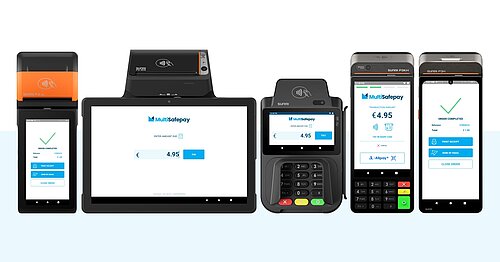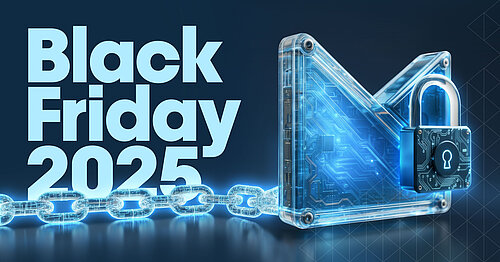POS malware: how to protect your business
It’s where revenue comes in, transactions are completed, and your customer’s purchase journey ends. Because it processes sensitive payment data, it is also a tempting target for cybercriminals.
Most merchants already think about internet security for their online channels or physical security for their stores. What often gets overlooked is POS security, both the terminals themselves and the internal networks that connect them. Attackers know this, and it makes POS systems a valuable entry point.
POS malware is malicious software designed to capture card information before it is encrypted and sent securely for processing. That may sound intimidating, but the good news is with the right knowledge, tools, and technology, you can stay ahead of the risk.
What is POS malware?
POS malware is code written with one purpose: to infiltrate point-of-sale terminals and capture payment card data in its unencrypted state.
The information criminals are after often includes:
Card numbers, expiration dates, and cardholder names
PINs, passwords, and even administrator credentials
Full transaction details in some cases
Once stolen, this information is rarely used by the attacker themselves. Instead, it is packaged up and sold on the black market to fuel widespread fraud operations.
Types of POS malware
Not all POS malware works the same way. Different malware types are designed to exploit different weaknesses in a POS system. Here are the most common examples:
Memory scrapers (RAM scrapers): Target a terminal’s memory, where card data briefly appears before encryption.
Keyloggers: Record every keystroke entered into the system, including PINs, staff logins, or administrator passwords.
Backdoor malware: Creates a hidden entry point for attackers to return undetected.
The key takeaway: malware can strike at multiple stages, from the moment a card is swiped to when the data is transmitted.
How POS malware works
While the details can vary, most malware infections follow the same general pattern:
Infiltration: Attackers gain access through phishing emails, fake software updates, compromised vendor accounts, or even insider threats.
Residence: The malware hides inside POS software or installs a backdoor to stay undetected.
Operation: It scrapes memory, logs keystrokes, or copies files quietly in the background.
Data exfiltration: Stolen data is sent to a remote server, in small, encrypted batches to avoid raising alarms.
Persistence and spread: Malware can reinfect devices after cleanup or move to other terminals on the same network.
This stealthy process often slips past traditional antivirus tools, which is why layered protection is so important.
How we help protect you and your terminals
This is where choosing the right POS partner makes all the difference. At MultiSafepay, we believe you shouldn’t have to carry the full weight of security alone. Our SmartPOS terminals are built with layers of protection, backed by our monitoring and compliance support.
Certified protection: Our devices meet PCI DSS (global payment data security standard) and EMVCo (chip card security standard) requirements. These certifications have a shelf-life and require ongoing renewal, so your systems stay aligned with the latest standards.
Built-in safeguards: Secure Element (SE) and Trusted Execution Environment (TEE) isolate sensitive data, keeping it safe from malware.
Tamper resistance: Devices include anti-dismantling detection and secure circuit design.
Encrypted data handling: Payment data is encrypted within the SE and never leaves the terminal in plain text.
Proactive support: We use mobile device management (MDM), compliance checks, and advanced anti-malware monitoring to help keep your POS environment secure.
Common vulnerabilities to watch for
Even the best devices can be undermined if certain basics are overlooked. Some common risks include:
Outdated software or skipped updates
Weak or default passwords
Staff not trained to recognize phishing or social engineering
Flat, unsegmented networks where one breach spreads everywhere
Relying only on antivirus tools for protection
Unsecured physical access to devices
Remote access tools left exposed without multi-factor authentication
Five steps you can take today
POS security is not something you have to manage alone. Your provider should deliver certified hardware, compliance, and monitoring. Your role is to take simple but powerful steps on the ground:





- Keep terminals updated: Install the latest firmware and security patches.
- Strengthen access controls: Replace default passwords, rotate them often, and enable multi-factor authentication.
- Segment your networks: Separate POS terminals from Wi-Fi and back-office systems.
- Secure devices physically: Use locked mounts and tamper protection.
- Train your team: Equip staff to recognize phishing, suspicious updates, or unusual device behavior.
What to do if your POS is compromised
If you think a POS terminal may be infected, quick action can limit damage:
Disconnect the device from your network immediately
Stop using it until it has been checked and cleaned
Contact your provider for support and guidance
Run an audit to identify other affected devices
Notify banks, acquirers, or compliance officers if required
Review and fix vulnerabilities to prevent reinfection
Potential impact on your business
If POS malware isn’t addressed, the consequences can affect more than just your IT systems:
Financial loss through fraud, chargebacks, or fines can add up quickly.
Reputational damage and loss of customer trust if they feel their data is not safe with you.
Operational downtime and disruption while devices are cleaned
Legal and compliance risks for failing to meet PCI DSS
Prevention is always less costly than response.
Security through awareness and action
POS malware is a real threat, but one you can manage effectively with the right safeguards. By understanding how it works, knowing where responsibilities lie, and following clear steps to secure your devices, you protect both your revenue and your customer relationships.
At MultiSafepay, our role is to guide you, provide secure and certified terminals, and offer the ongoing monitoring needed to keep threats at bay. Your role is to stay proactive with updates, passwords, and staff awareness. Together, that partnership creates real resilience.
If you’re reviewing your current setup or exploring more secure POS options, our team can guide you to a solution that works today and scales with your business tomorrow.



